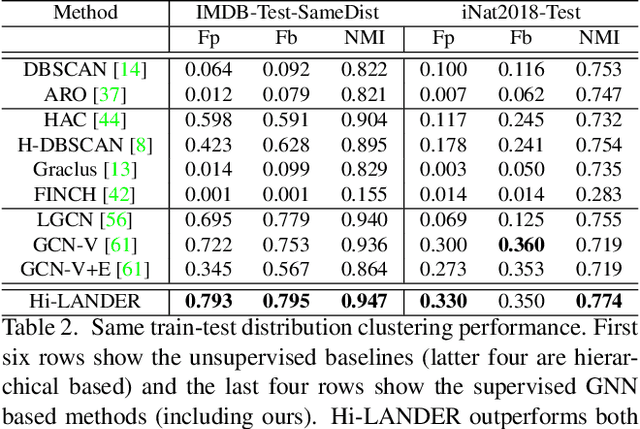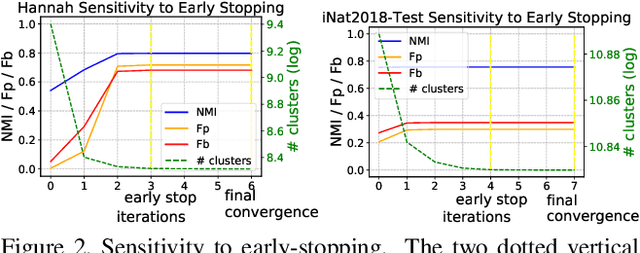Yongxin Wang
PhyBlock: A Progressive Benchmark for Physical Understanding and Planning via 3D Block Assembly
Jun 10, 2025Abstract:While vision-language models (VLMs) have demonstrated promising capabilities in reasoning and planning for embodied agents, their ability to comprehend physical phenomena, particularly within structured 3D environments, remains severely limited. To close this gap, we introduce PhyBlock, a progressive benchmark designed to assess VLMs on physical understanding and planning through robotic 3D block assembly tasks. PhyBlock integrates a novel four-level cognitive hierarchy assembly task alongside targeted Visual Question Answering (VQA) samples, collectively aimed at evaluating progressive spatial reasoning and fundamental physical comprehension, including object properties, spatial relationships, and holistic scene understanding. PhyBlock includes 2600 block tasks (400 assembly tasks, 2200 VQA tasks) and evaluates models across three key dimensions: partial completion, failure diagnosis, and planning robustness. We benchmark 21 state-of-the-art VLMs, highlighting their strengths and limitations in physically grounded, multi-step planning. Our empirical findings indicate that the performance of VLMs exhibits pronounced limitations in high-level planning and reasoning capabilities, leading to a notable decline in performance for the growing complexity of the tasks. Error analysis reveals persistent difficulties in spatial orientation and dependency reasoning. Surprisingly, chain-of-thought prompting offers minimal improvements, suggesting spatial tasks heavily rely on intuitive model comprehension. We position PhyBlock as a unified testbed to advance embodied reasoning, bridging vision-language understanding and real-world physical problem-solving.
EACO: Enhancing Alignment in Multimodal LLMs via Critical Observation
Dec 06, 2024



Abstract:Multimodal large language models (MLLMs) have achieved remarkable progress on various visual question answering and reasoning tasks leveraging instruction fine-tuning specific datasets. They can also learn from preference data annotated by human to enhance their reasoning ability and mitigate hallucinations. Most of preference data is generated from the model itself. However, existing methods require high-quality critical labels, which are costly and rely on human or proprietary models like GPT-4V. In this work, we propose Enhancing Alignment in MLLMs via Critical Observation (EACO), which aligns MLLMs by self-generated preference data using only 5k images economically. Our approach begins with collecting and refining a Scoring Evaluation Instruction-tuning dataset to train a critical evaluation model, termed the Critic. This Critic observes model responses across multiple dimensions, selecting preferred and non-preferred outputs for refined Direct Preference Optimization (DPO) tuning. To further enhance model performance, we employ an additional supervised fine-tuning stage after preference tuning. EACO reduces the overall hallucinations by 65.6% on HallusionBench and improves the reasoning ability by 21.8% on MME-Cognition. EACO achieves an 8.5% improvement over LLaVA-v1.6-Mistral-7B across multiple benchmarks. Remarkably, EACO also shows the potential critical ability in open-source MLLMs, demonstrating that EACO is a viable path to boost the competence of MLLMs.
Web2Code: A Large-scale Webpage-to-Code Dataset and Evaluation Framework for Multimodal LLMs
Jun 28, 2024



Abstract:Multimodal large language models (MLLMs) have shown impressive success across modalities such as image, video, and audio in a variety of understanding and generation tasks. However, current MLLMs are surprisingly poor at understanding webpage screenshots and generating their corresponding HTML code. To address this problem, we propose Web2Code, a benchmark consisting of a new large-scale webpage-to-code dataset for instruction tuning and an evaluation framework for the webpage understanding and HTML code translation abilities of MLLMs. For dataset construction, we leverage pretrained LLMs to enhance existing webpage-to-code datasets as well as generate a diverse pool of new webpages rendered into images. Specifically, the inputs are webpage images and instructions, while the responses are the webpage's HTML code. We further include diverse natural language QA pairs about the webpage content in the responses to enable a more comprehensive understanding of the web content. To evaluate model performance in these tasks, we develop an evaluation framework for testing MLLMs' abilities in webpage understanding and web-to-code generation. Extensive experiments show that our proposed dataset is beneficial not only to our proposed tasks but also in the general visual domain, while previous datasets result in worse performance. We hope our work will contribute to the development of general MLLMs suitable for web-based content generation and task automation. Our data and code will be available at https://github.com/MBZUAI-LLM/web2code.
Prototype-Based Layered Federated Cross-Modal Hashing
Oct 27, 2022

Abstract:Recently, deep cross-modal hashing has gained increasing attention. However, in many practical cases, data are distributed and cannot be collected due to privacy concerns, which greatly reduces the cross-modal hashing performance on each client. And due to the problems of statistical heterogeneity, model heterogeneity, and forcing each client to accept the same parameters, applying federated learning to cross-modal hash learning becomes very tricky. In this paper, we propose a novel method called prototype-based layered federated cross-modal hashing. Specifically, the prototype is introduced to learn the similarity between instances and classes on server, reducing the impact of statistical heterogeneity (non-IID) on different clients. And we monitor the distance between local and global prototypes to further improve the performance. To realize personalized federated learning, a hypernetwork is deployed on server to dynamically update different layers' weights of local model. Experimental results on benchmark datasets show that our method outperforms state-of-the-art methods.
Three-Stream Joint Network for Zero-Shot Sketch-Based Image Retrieval
Apr 12, 2022



Abstract:The Zero-Shot Sketch-based Image Retrieval (ZS-SBIR) is a challenging task because of the large domain gap between sketches and natural images as well as the semantic inconsistency between seen and unseen categories. Previous literature bridges seen and unseen categories by semantic embedding, which requires prior knowledge of the exact class names and additional extraction efforts. And most works reduce domain gap by mapping sketches and natural images into a common high-level space using constructed sketch-image pairs, which ignore the unpaired information between images and sketches. To address these issues, in this paper, we propose a novel Three-Stream Joint Training Network (3JOIN) for the ZS-SBIR task. To narrow the domain differences between sketches and images, we extract edge maps for natural images and treat them as a bridge between images and sketches, which have similar content to images and similar style to sketches. For exploiting a sufficient combination of sketches, natural images, and edge maps, a novel three-stream joint training network is proposed. In addition, we use a teacher network to extract the implicit semantics of the samples without the aid of other semantics and transfer the learned knowledge to unseen classes. Extensive experiments conducted on two real-world datasets demonstrate the superiority of our proposed method.
ViT-FOD: A Vision Transformer based Fine-grained Object Discriminator
Mar 24, 2022



Abstract:Recently, several Vision Transformer (ViT) based methods have been proposed for Fine-Grained Visual Classification (FGVC).These methods significantly surpass existing CNN-based ones, demonstrating the effectiveness of ViT in FGVC tasks.However, there are some limitations when applying ViT directly to FGVC.First, ViT needs to split images into patches and calculate the attention of every pair, which may result in heavy redundant calculation and unsatisfying performance when handling fine-grained images with complex background and small objects.Second, a standard ViT only utilizes the class token in the final layer for classification, which is not enough to extract comprehensive fine-grained information. To address these issues, we propose a novel ViT based fine-grained object discriminator for FGVC tasks, ViT-FOD for short. Specifically, besides a ViT backbone, it further introduces three novel components, i.e, Attention Patch Combination (APC), Critical Regions Filter (CRF), and Complementary Tokens Integration (CTI). Thereinto, APC pieces informative patches from two images to generate a new image so that the redundant calculation can be reduced. CRF emphasizes tokens corresponding to discriminative regions to generate a new class token for subtle feature learning. To extract comprehensive information, CTI integrates complementary information captured by class tokens in different ViT layers. We conduct comprehensive experiments on widely used datasets and the results demonstrate that ViT-FOD is able to achieve state-of-the-art performance.
Learning Hierarchical Graph Neural Networks for Image Clustering
Jul 17, 2021



Abstract:We propose a hierarchical graph neural network (GNN) model that learns how to cluster a set of images into an unknown number of identities using a training set of images annotated with labels belonging to a disjoint set of identities. Our hierarchical GNN uses a novel approach to merge connected components predicted at each level of the hierarchy to form a new graph at the next level. Unlike fully unsupervised hierarchical clustering, the choice of grouping and complexity criteria stems naturally from supervision in the training set. The resulting method, Hi-LANDER, achieves an average of 54% improvement in F-score and 8% increase in Normalized Mutual Information (NMI) relative to current GNN-based clustering algorithms. Additionally, state-of-the-art GNN-based methods rely on separate models to predict linkage probabilities and node densities as intermediate steps of the clustering process. In contrast, our unified framework achieves a seven-fold decrease in computational cost. We release our training and inference code at https://github.com/dmlc/dgl/tree/master/examples/pytorch/hilander.
Semi-TCL: Semi-Supervised Track Contrastive Representation Learning
Jul 06, 2021



Abstract:Online tracking of multiple objects in videos requires strong capacity of modeling and matching object appearances. Previous methods for learning appearance embedding mostly rely on instance-level matching without considering the temporal continuity provided by videos. We design a new instance-to-track matching objective to learn appearance embedding that compares a candidate detection to the embedding of the tracks persisted in the tracker. It enables us to learn not only from videos labeled with complete tracks, but also unlabeled or partially labeled videos. We implement this learning objective in a unified form following the spirit of constrastive loss. Experiments on multiple object tracking datasets demonstrate that our method can effectively learning discriminative appearance embeddings in a semi-supervised fashion and outperform state of the art methods on representative benchmarks.
MTGAT: Multimodal Temporal Graph Attention Networks for Unaligned Human Multimodal Language Sequences
Oct 22, 2020



Abstract:Human communication is multimodal in nature; it is through multiple modalities, i.e., language, voice, and facial expressions, that opinions and emotions are expressed. Data in this domain exhibits complex multi-relational and temporal interactions. Learning from this data is a fundamentally challenging research problem. In this paper, we propose Multimodal Temporal Graph Attention Networks (MTGAT). MTGAT is an interpretable graph-based neural model that provides a suitable framework for analyzing this type of multimodal sequential data. We first introduce a procedure to convert unaligned multimodal sequence data into a graph with heterogeneous nodes and edges that captures the rich interactions between different modalities through time. Then, a novel graph operation, called Multimodal Temporal Graph Attention, along with a dynamic pruning and read-out technique is designed to efficiently process this multimodal temporal graph. By learning to focus only on the important interactions within the graph, our MTGAT is able to achieve state-of-the-art performance on multimodal sentiment analysis and emotion recognition benchmarks including IEMOCAP and CMU-MOSI, while utilizing significantly fewer computations.
Weakly-Supervised Online Hashing
Sep 16, 2020



Abstract:With the rapid development of social websites, recent years have witnessed an explosive growth of social images with user-provided tags which continuously arrive in a streaming fashion. Due to the fast query speed and low storage cost, hashing-based methods for image search have attracted increasing attention. However, existing hashing methods for social image retrieval are based on batch mode which violates the nature of social images, i.e., social images are usually generated periodically or collected in a stream fashion. Although there exist many online image hashing methods, they either adopt unsupervised learning which ignore the relevant tags, or are designed in the supervised manner which needs high-quality labels. In this paper, to overcome the above limitations, we propose a new method named Weakly-supervised Online Hashing (WOH). In order to learn high-quality hash codes, WOH exploits the weak supervision by considering the semantics of tags and removing the noise. Besides, We develop a discrete online optimization algorithm for WOH, which is efficient and scalable. Extensive experiments conducted on two real-world datasets demonstrate the superiority of WOH compared with several state-of-the-art hashing baselines.
 Add to Chrome
Add to Chrome Add to Firefox
Add to Firefox Add to Edge
Add to Edge